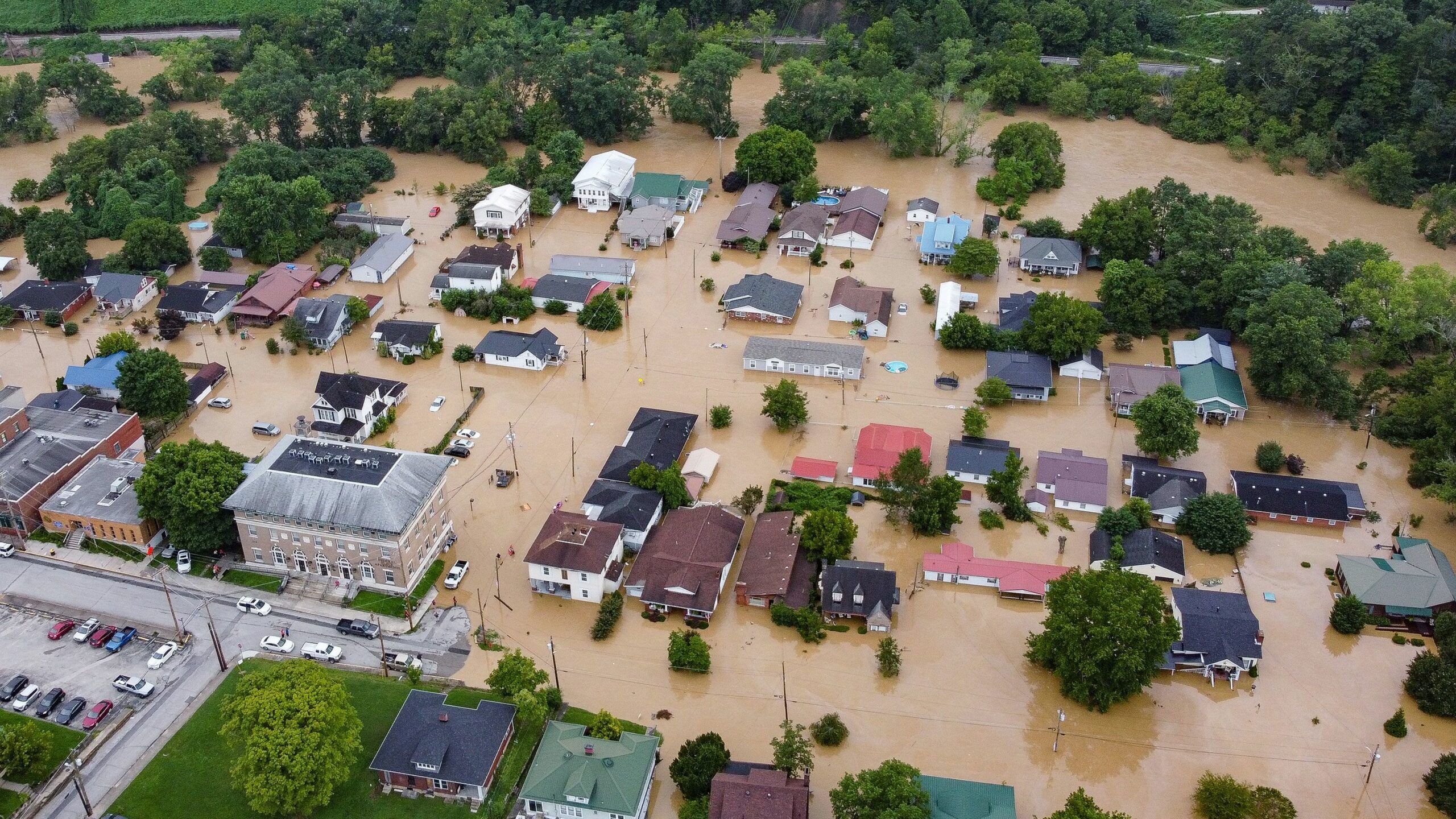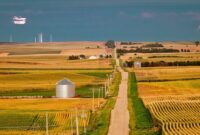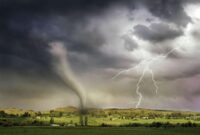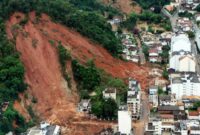Safest Places to Live in the US – When considering a home purchase, one of the most important factors is ensuring your investment—and your family—will be safe from natural disasters.
Among the various hazards, flooding poses one of the most frequent and damaging risks in many parts of the United States.
With climate change leading to rising sea levels and more severe weather events, it’s more important than ever to find regions less prone to flooding.
This article will highlight some of the safest areas to live in the U.S. for those seeking peace of mind from the threat of floods.
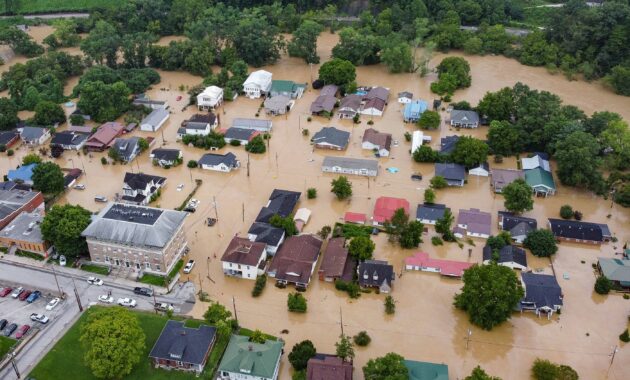
1. The Rocky Mountain Region
The Rocky Mountain states, including Colorado, Wyoming, Montana, and Idaho, offer breathtaking landscapes with the bonus of being some of the safest areas from flooding.
- Colorado: The high elevation of cities like Denver, Boulder, and Fort Collins ensures they are safe from coastal flooding. While Colorado does have flash flood risks in some mountainous areas, there are many regions—particularly around Denver—where flood risk is low, and the growing economy makes it an attractive place to settle.
- Wyoming & Montana: These two states are characterized by their expansive open spaces, mountains, and low population density. With rivers that flow mainly from the Rockies and not near large flood-prone bodies of water, the risk of major flooding is minimal – Safest Places to Live in the US.
Read also:
1. Best Safe Areas to Buy Property in the U.S. During Hurricane Season: A Comprehensive Guide
2. Building a Hurricane-Resistant Home: Key Features and Considerations
3. Comprehensive Guide to Flood-Resistant Houses: Cause and Effect Analysis
2. The Upper Midwest – Minnesota and Wisconsin
Although the Midwest is often known for its tornadoes and harsh winters, parts of Minnesota and Wisconsin are relatively free from flooding risks. With thousands of natural lakes and vast forests, these states are more susceptible to other types of weather but have excellent drainage systems to manage rainfall.
- Minnesota: Known as the “Land of 10,000 Lakes,” Minnesota has carefully managed water systems to prevent major flood events. Cities like Minneapolis and St. Paul, though they sit near the Mississippi River, have implemented substantial flood prevention measures.
- Wisconsin: The rural and suburban areas of Wisconsin, particularly in the northern and central regions, are far from flood plains. Towns like Madison and Green Bay are well-prepared for most weather-related issues, with minimal concerns about large-scale flooding.
3. The Pacific Northwest – Washington and Oregon
Although the Pacific Northwest experiences heavy rainfall, particularly in cities like Seattle and Portland, these regions are known for efficient urban planning and advanced flood control measures.
- Washington State: Most of the flood risks in Washington are confined to river valleys. However, cities like Spokane and much of Eastern Washington are well-protected from the flooding that affects the coastal regions.
- Oregon: Similarly, Oregon’s inland cities, such as Bend and Eugene, are free from coastal flood risks. While some river basins can flood during extreme weather, modern flood infrastructure protects residential areas well.
4. New England – Vermont and New Hampshire
The beautiful states of Vermont and New Hampshire are renowned for their quaint towns, rolling hills, and mountainous terrain. These features also protect the area from many of the flood risks seen in other parts of the U.S.
- Vermont: With a focus on environmental conservation and sustainable urban planning, Vermont’s communities are designed to manage heavy rainfall without succumbing to floods. The state’s Green Mountains help redirect storm runoff, minimizing flood risks in residential areas.
- New Hampshire: Although it has a short coastline, New Hampshire is largely free from flood risks, especially in inland towns like Concord and Hanover. The state’s hilly terrain and dense forests act as natural flood barriers, helping keep communities safe (Safest Places to Live in US).
5. The Great Plains – Nebraska and Kansas
While some areas of the Great Plains experience tornadoes, states like Nebraska and Kansas offer flood-safe regions that are ideal for those seeking a home far from water-related disasters.
- Nebraska: Cities like Lincoln and Omaha, despite being near the Missouri River, have made significant investments in flood mitigation. The interior regions of Nebraska offer affordable housing and low flood risks, making them attractive for families.
- Kansas: Kansas is known for its wide-open spaces and stable housing markets. The central and western parts of the state, far from major rivers and flood plains, offer low flood risks. While some areas may experience drought or tornadoes, flooding is rarely a concern.
Why Flood Safety Matters for Homebuyers
Flooding is one of the most damaging natural disasters, not only because of the immediate destruction it causes to property but also because of the long-term effects it can have on home values, insurance costs, and overall safety.
Flooding can lead to mold, foundation damage, and costly repairs that far exceed the initial cost of water damage.
For many, living in a flood-prone area can also mean higher insurance premiums, mandatory flood insurance, and, ultimately, a lower return on investment when it’s time to sell.
By choosing to live in a flood-safe region, you can avoid these risks and enjoy the security of knowing your property is protected.
Moreover, many of the regions mentioned above offer other advantages, such as thriving local economies, good schools, and high quality of life.
Conclusion
When looking for a new home, it’s critical to factor in the potential for natural disasters. While floods are unpredictable, certain regions of the United States are far less likely to be affected.
The Rocky Mountain states, the Upper Midwest, the Pacific Northwest, New England, and the Great Plains all offer excellent opportunities for homebuyers looking to avoid flood risks.
Whether you’re looking for scenic beauty, economic opportunity, or simply peace of mind, these areas provide a safe and secure environment for building your future.
This article provides a comprehensive guide for anyone searching for a flood-safe location in the United States.
Whether your priority is natural beauty, economic opportunities, or simply safety from natural disasters, the regions highlighted offer a great mix of factors to consider for your next home purchase.
The Safest Places to Live in the U.S. to Avoid Flooding: Top Areas for a Safe and Secure Home: Alabama, Alaska, Arizona, Arkansas, California, Colorado, Connecticut, Delaware, Florida, Georgia, Hawaii, Idaho, Illinois, Indiana, Iowa, Kansas, Kentucky, Louisiana, Maine, Maryland, Massachusetts, Michigan, Minnesota, Mississippi, Missouri, Montana, Nebraska, Nevada, New Hampshire, New Jersey, New Mexico, New York, North Carolina, North Dakota, Ohio, Oklahoma, Oregon, Pennsylvania, Rhode Island, South Carolina, South Dakota, Tennessee, Texas, Utah, Vermont, Virginia, Washington, West Virginia, Wisconsin, Wyoming.
Buenos Aires, Argentina; São Paulo, Brazil; Rio de Janeiro, Brazil; Bogotá, Colombia; Lima, Peru; Santiago, Chile; Caracas, Venezuela; Montevideo, Uruguay; Quito, Ecuador; Asunción, Paraguay; La Paz, Bolivia; Sucre, Bolivia; Medellín, Colombia; Cali, Colombia; Guayaquil, Ecuador; Valparaíso, Chile; Rosario, Argentina; Córdoba, Argentina; Maracaibo, Venezuela; Barranquilla, Colombia; Manaus, Brazil.
Africa:
Cairo, Lagos, Nairobi, Dakar, Johannesburg, Casablanca, Addis Ababa, Accra, Tunis, Lusaka, Harare, Kampala, Algiers, Khartoum, Mogadishu, Freetown, Windhoek, Kigali, Bamako, Dar es Salaam.
Australia:
Sydney, Melbourne, Brisbane, Perth, Adelaide, Hobart, Darwin, Canberra, Gold Coast, Cairns, Newcastle, Wollongong, Geelong, Townsville, Launceston, Toowoomba, Ballarat, Bendigo, Albury, Rockhampton.
Europe:
London, Paris, Rome, Berlin, Madrid, Vienna, Amsterdam, Lisbon, Prague, Athens, Brussels, Copenhagen, Oslo, Dublin, Warsaw, Helsinki, Stockholm, Budapest, Edinburgh, Zurich, Munich.

